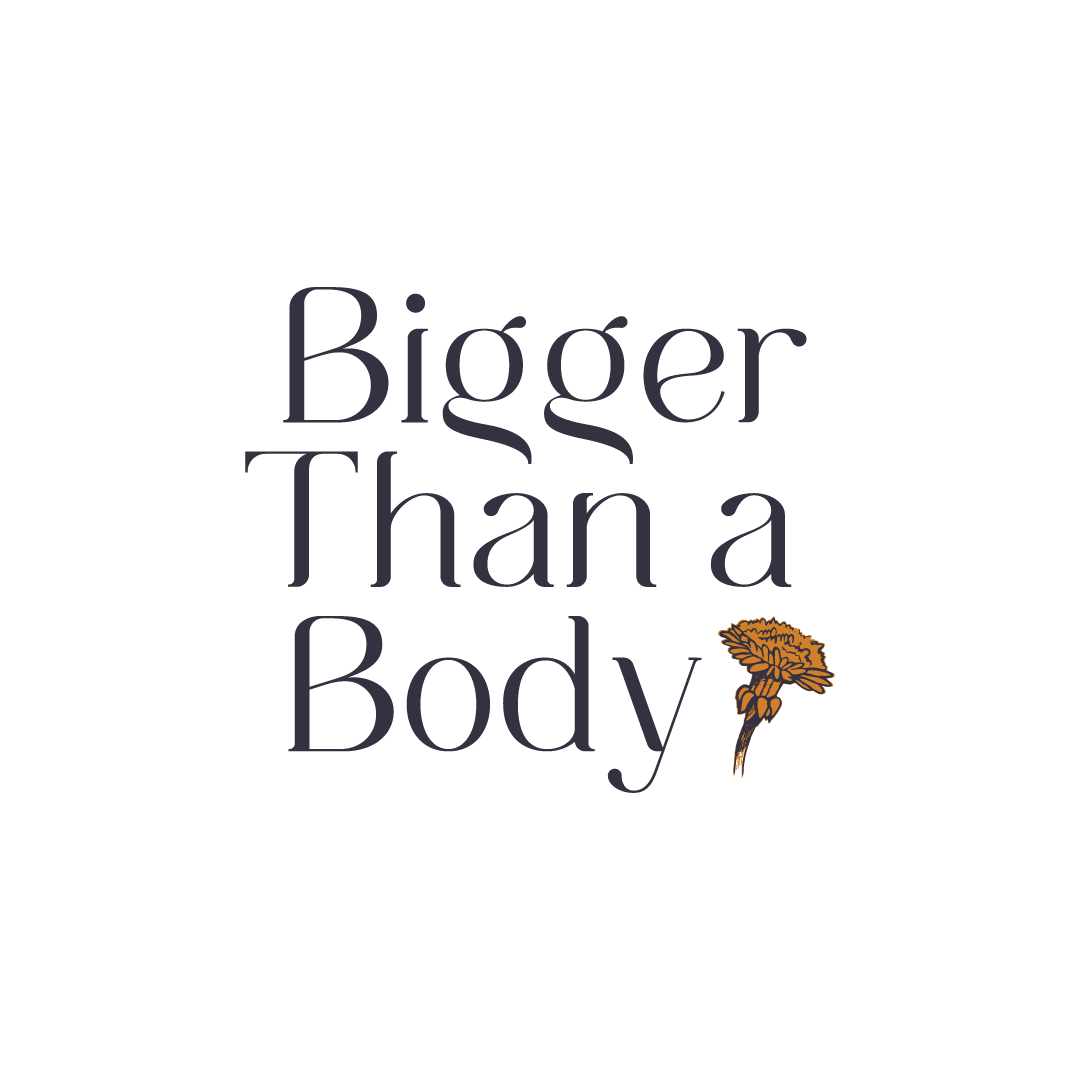The Evolution of Fatphobia and the Thin Ideal
Unraveling pivotal points in history that impacted the way we view and value bodies
Pictured above: English model, actress, and singer Twiggy Lawson. Source: showstudio.com.
Believe it or not, the compulsion for people to manipulate their bodies into smaller shapes and sizes hasn’t always been a thing. In fact, for the vast majority of human history, people gave two shits about the size of their waistline or how much they weighed.
Like most socio-cultural phenomenons, the thin ideal and fatphobia are concepts created by people of power, and their roots are far from pure. Nonetheless, they’re concepts we know all too well today.
The mere thought of living in a world where bodies of varying shapes, sizes, colors, and ableness are treated equitably seems lamentably foreign. But it’s a world I fight to revive every day in my work as an eating disorder recovery coach. Part of that work entails unraveling the origins of thin body idolization so, perhaps, we can productively leverage a bit of spite to say, “Enough is enough. I am worthy just as I am.”
Because yes, my fellow body occupant, you most certainly are.
The Subtle Difference Between Fatphobia and the Thin Ideal
Before delving into the history, let’s first distinguish two terms commonly heard in the body acceptance and anti-fat prejudice spaces: “fatphobia” and “thin ideal.” Both terms investigate and challenge the perception that fat bodies are inferior bodies.
Fatphobia
Put simply, fatphobia, also known as “weight stigma,” “anti-fat,” and “weight bias” is a pathological fear of fatness. This means not only shouldering an aversion to being fat but also carrying certain stereotypes and negative attitudes about people in larger bodies.
Thin Ideal
The “thin ideal” yields not only a fear of fatness but also an unacceptance of a “normal” or “average” body.
According to the CDC, the average height and weight for an adult woman in the U.S. is 5’3.5” and 170.8 pounds. However, this body type is a far cry from the supermodels we see strutting our runways.
This means a woman with a “healthy” body mass index (more on this later) often doesn’t meet Western society’s ideal body type. Where does this leave her? Not fat, but not ideal, either — an attribute about herself she’s reminded of every day.
History of Fatphobia and the Thin Ideal
While socio-political and socio-cultural constructs of the last 75 years are much to blame for the proliferation of weight stigma as we know it today, fatphobia and the thin ideal have much deeper roots in history.
Anti-Blackness and weight bias
In her book Fearing the Black Body: The Racial Origins of Fat Phobia (2019), Sabrina Strings discusses the genesis of weight stigma during the Enlightenment era and the Trans-Atlantic Slave Trade.
First, however, Strings takes readers back to the High Renaissance period of the 15th and 16th centuries. She shares how the works of proclaimed painters like Albrecht Dürer and Peter Paul Rubens often featured curvaceous representations of white Venuses and other magnificent figures. From the aesthete’s eye, it seemed plumpness and beauty were deeply intertwined.
But the constructs of physical attractiveness began to take a turn in the 17th century. With slavery in full force, the production of sugar reached an all-time high. As an unexpected consequence of increased consumption of the “white gold,” Europeans became noticeably heavier, and this induced a sudden anxiety around fatness.
Strings discusses how artists and intellectuals began to openly characterize plumpness as a symbol of debauchery. Self-control, in various aspects, emerged as a sign of morality and religious devotion, forging a newfound admiration for thinness.
By the early 19th century, progressions in slavery and interracial sex (mostly rape of the enslaved by the White colonists) meant skin color alone was no longer a reliable distinguisher between the enslaved and the free. White supremacists conjured up a new way to amplify their anti-blackness. They ascertained that Black people were inherently obese due to their sensuous and gluttonous nature. Robust, voluptuous bodies were undeserving of freedom in their eyes.
Anti-blackness and anti-fatness materialized in the proto-science of health and beauty in the early and mid-nineteenth centuries. Magazines idolized thin, White American femininity and mocked Black women as savages, unable to self-regulate. This public display of the ideal American beauty bolstered white supremacy, as thinness became a marked feature of elitism and privilege.
The introduction of the clothing sizing system spawned an intrinsic link between body and beauty. The age-old practice of Haute couture and handmade garments became the exception. Now, bodies were meant to fit clothes, not the other way around.
What came next was a surplus of ready-made clothing meant for the standard and slim-bodied consumers, but only a few options for larger-bodied shoppers.
Fashion designers like Lane Bryant recognized this gap in the market and opened one of the first dedicated “extra size” and “stout women” (extended size, plus size, and curvy were not the descriptors at the time) clothing shops in the early 1900s. However, Bryant’s and other plus size companies’ advertisements were rife with body shame, stressing the ability of their clothing to “slenderize” the women wearing their garments.
Image source: Business Insider
“Proud of having been in business for thirty-five years — and proud of having sold wearing apparel to so many millions of stout women during those thirty-five years.”
— Lane Bryant, 1935.
The women in the advertisements were White, upper class, and appeared much slimmer than the plus-size models we know today.
The modeling and fashion industries exploded by the mid-20th century. Ultra-slim runway models like the world-famous Twiggy illustrated how thin ideals of the century prior not only stood the test of time but intensified.
By the 1990s, rail-thin British model Kate Moss and the preposterous heroin chic fashion trend took the world by storm. Moss’s popularized belief that “Nothing tastes as good as skinny feels” goes down as one of the most controversial, elitist, fat-phobic quotes in history.
Thanks to the Health at Every Size (HAES) and Fat Acceptance movements, we currently see a wider variety of body types in commercial modeling and the entertainment industry, but the ultra-slender physique is the one that still reigns queen. And this little experiment I did proves it.
I found a list of the top 17 places to shop online for clothes in 2022. After randomly clicking on five of them and being taken to their homepages, my navigation went as such:
Women’s Clothing
Denim/Jeans
Click on the first item listed
From there, I looked at the product details, and each one listed the height, waist circumference, and pant size being worn by the model pictured.
In all five cases, the model was either 5’ 9” or 5’ 10” tall. In all but one case, she wore a size two and had a waist circumference of 24”. The one “larger” model wore a size 4. You can fact-check me here:
Even as a white, straight-sized woman, this misrepresentation and idealistic view of what beauty should look like appalls me.
Equally disconcerting is the way thin ideals have intersected with healthcare.
The Racist and Sexist Backbone of the BMI
The roots of the body mass index (BMI) stem back to 1832. Belgian statistician, mathematician, sociologist, and astronomer Adolphe Quetelet studied the physical characteristics and social aptitudes of French and Scottish men to determine the ideal l’homme moyen (“the average man”). One of his most acclaimed findings was that weight increases as the square of the height — what he called the Quetelet Index and what we know today as the BMI.
The BMI’s formula is (skeptically) simple: take your weight (in kilograms) divided by the square of your height (in meters). It doesn’t factor in characteristics like sex, muscle mass, age, race, or ethnicity.
BMI categories are as follows:
Underweight = <18.5
Normal weight = 18.5–24.9
Overweight = 25–29.9
Obese = BMI of 30 or greater
Using the average-sized U.S. woman’s dimensions (170.8 pounds and 5’ 3.5”), the calculation would be: 77.5 / 2.6 = 29.8.
So, because of a nearly 200-year-old formula invented by a mathematician (not a healthcare provider in any stretch of the realm) intended for a statistical measure of human populations (not individual health), we ascertain that the average U.S. woman is on the brink of obesity. Not only is it irresponsible to take a subject as complex as health and boil it down to a single marker, but it’s also faulty AF.
What’s more, the data used to measure the efficacy of the BMI to diagnose obesity was both racist and sexist. In 1974, U.S. researcher Ancel Keys assessed the body compositions of 7,400 men from five, predominately white, nations. Between the BMI, water displacement experiments, and the skinfold assessment, Keys found the BMI to be the most reliable of the three, accurately diagnosing obesity nearly 50 percent of the time.
Following Keys’ findings, health providers began using the BMI measurement during patient visits. In 1985, the National Institute of Health (NIH) adopted the use of the BMI as a standardized health metric.
Thus, a recommendation by a white guy using primarily white guy test subjects that proved only partially accurate informed the guidelines used to measure health for all people.
In 1998, the NIH announced stricter BMI guidelines, lowering the BMI ranges for each of the normal, overweight, and obese categories. An article from CNN stated:
“Millions of Americans became “fat” Wednesday — even if they didn’t gain a pound — as the federal government adopted a controversial method for determining who is considered overweight.”
More than 20 years later, and despite significant backlash from the media, healthcare workers, and the general public about the invalidity and inequity of the BMI, it maintains its status as the overriding health predictor.
Because we know sex, age, race, and ethnicity all impact fat and muscle mass, this racist and biased form of BMI weight measuring has negatively affected a multitude of people, especially women and BIPOC people.
Where This History Leaves Us
The multi-century history of shaming and discriminating against non-white, natural bodies has deeply influenced the image-centric, thin-privileged Western world we exist in today.
In part because of this history, we have conclusive findings like these:
People in marginalized bodies are prone to avoid engagement in primary health care due to weight shaming, irrelevant treatment plans, and poor communication from health care providers.
No, we cannot say with certainty how much more equity would exist from body to body if we were to rewrite this history.
But try to imagine a world where a more diverse set of bodies filled our runways, beauty pageants, movie casts (not as the funny fat person), and clothing retailer websites.
Imagine a world where BMI was one of a slew of health markers, and without any “normal,” “overweight,” etc. categories attached.
Imagine a world where everyone had access to gyms, sidewalks, bicycles, nutritious foods, and education on preventative healthcare.
I’m no mathematician, but I’d postulate we’d all be a lot healthier, loving, and equitable in this world. And that’s precisely why I’m going to continue to fight for it.



